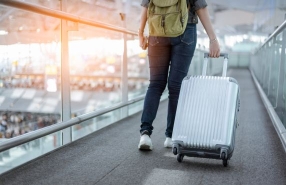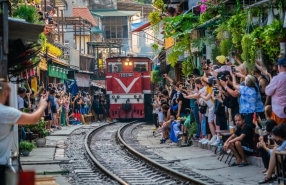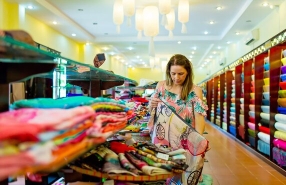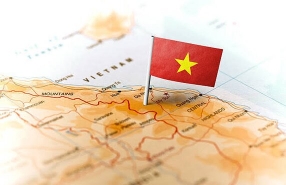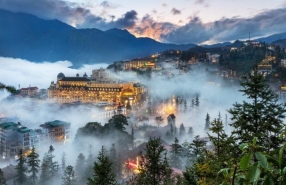Hue What To Do? Explore The Imperial Citadel Of Hue

A well-known and alluring travel destination, Hue Imperial City gives visitors the opportunity to take in the breathtaking historical scenery as well as the rich architectural legacy of a bygone imperial era. Continue reading for insightful advice on how to explore this breathtaking location in Hue–a wonderful suggestion for Hue what to do!
Table of Contents
- What is the Imperial Citadel of Hue?
- About Hue Citadel City Vietnam: Location, opening hours, ticket fee
- What to see in the Imperial Citadel of Hue?
- Forbidden Purple City
- Activities And Experiences In Hue Imperial Citadel
- Exploring The Buildings And Architecture Of The Citadel By Cyclo
- Visiting The System Of Mausoleums And Palaces Of Kings In Hue Citadel
- Admiring The Brilliant Lights Of Hue Imperial Citadel At Night
- Enjoying Delicious Cups Of Tea At Dien Tho Palace
- Participating In Royal Festival Activities In The Citadel Area
- Taking Photos At Hue Imperial Citadel
- Going To Duyet Thi Duong To Watch Royal Music Performances
- Client reviews of Hue Imperial Citadel
What is the Imperial Citadel of Hue?
Emperor Gia Long had the magnificent fortification known as Imperial Citadel Hue, Vietnam, constructed in 1805. About 30,000 workers had to be recruited by the royal court to work on the canals and river embankments. 80,000 more people had been organized by 1818, with the main goal being brick cladding on the east, west, south, and north sides.
Hue Imperial Citadel was completed when Emperor Minh Mang gave the order to build more defensive walls with guns on the outer tier of the citadel in 1831–1832. The walls served to keep out prospective attackers and to defend the fortress.
The Hue Imperial Citadel served as Vietnam's political, cultural, and military hub in addition to being a military bastion. The city served as the capital of Vietnam until 1945, when the country was divided into North and South Vietnam.
About Hue Citadel City Vietnam: Location, opening hours, ticket fee
Location:
Situated on the north bank of the Perfume River, Hue Imperial Citadel is bounded to the south by Tran Hung Dao and Le Duan streets, to the north by Tang Bat Ho and Dao Duy Anh streets, to the east by Phan Dang Luu and Huynh Thuc Khang streets, and to the west by Le Duan street.
Opening hours: Hue Imperial Citadel opening hours vary by season:
- In summer: 6:30 AM - 5:30 PM
- In winter: 7:00 AM - 5:00 PM
Ticket fee:
Hue Imperial Citadel entrance fee is the same for both foreign tourists and Vietnamese citizens as follows:
- Adults: 200,000 VND
- Children (aged 7 to 12): 40,000 VND
Tourists also have the option to use Hue Imperial Citadel guide services for an additional cost of 150,000 VND per guide.
What to see in the Imperial Citadel of Hue?
Ngo Mon Gate
Ngo Mon Gate is a complex of elaborate architecture and the great entry to the Imperial Citadel of Hue, located to the south. It appears to be a magnificent and majestic castle from a distance, with steps made of large stone slabs that cascade and lead to Ngu Phung Pavilion.
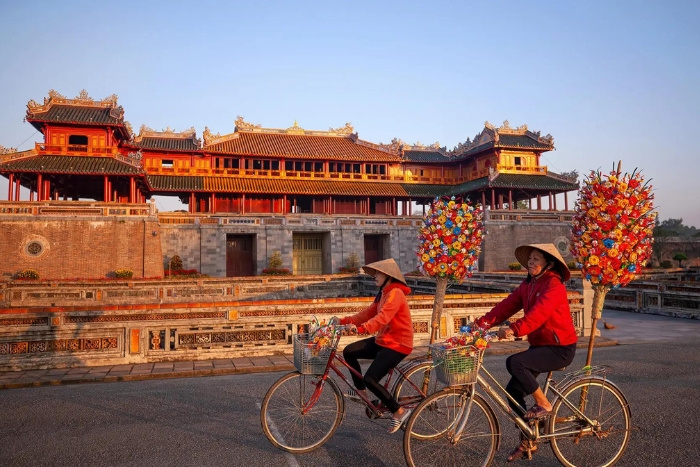
Imperial Citadel
The emperors and the royal family lived in the Hue Imperial Citadel, also known as Hoang Thanh, which also functioned as the royal court's administrative hub. It is also an important place of worship for the late Nguyen Dynasty monarchs and ancestors.
Under Emperor Gia Long, work on Hoang Thanh started in 1804, and Emperor Minh Mang oversaw its completion in 1833. There are four gates in the citadel, the main one being Ngo Mon. Among the numerous striking buildings inside the citadel are Thai Hoa Palace, Dien Tho Residence, Hien Lam Pavilion, and others.
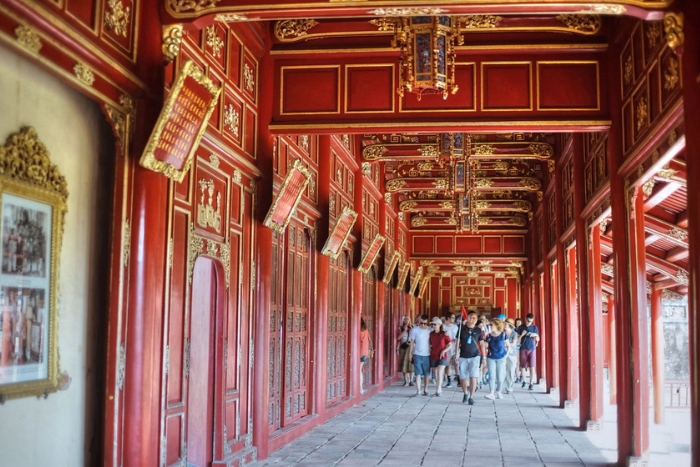
Forbidden Purple City
The center of Hue Imperial Citadel is home to the Forbidden Purple City. Built in 1803 and given its current name in 1821, it was ruled by Emperor Minh Mang. Its front gate is Dai Cung Mon, and it is shaped like a rectangle.
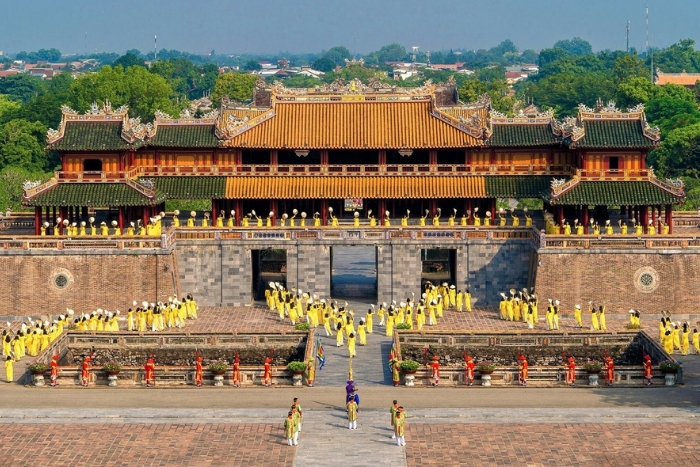
The deepest citadel of the Forbidden Purple City, Tu Cam Thanh, is home to a multitude of architectural constructions. Among the important structures and their purposes are:
- Can Thanh Palace served as the residence of the emperor
- Khon Thai Palace served as the residence of the queen
- Duyet Thi Duong Royal Theatre was the venue for court dramas performed for the emperor, princes, high-ranking officials, and ambassadors
- Thuong Thien Imperial Kitchen was responsible for preparing meals for the emperor and royal family
- Duong Tam Palace was the emperor's retreat where he could rest and indulge in leisure activities
- Thai Binh Pavilion was the reading area of the emperor
- Minh Quang Palace was the residence of the princes
- Trinh Minh Palace served as the residence of the concubines
Activities And Experiences In Hue Imperial Citadel
Exploring The Buildings And Architecture Of The Citadel By Cyclo
Hiring a cyclo to see the Hue Imperial Citadel area is a really fascinating experience that you should not miss when visiting Hue. A more sensible option for people who can't stand to walk or who are worn out from walking so much at the Hue Imperial Citadel. This is an additional method for you to save time while still taking in all the splendor of the Hue Imperial Citadel architecture.
Cyclos are also incredibly inexpensive, costing between 50,000 and 80,000 VND to go around the Hue Imperial Citadel region. You can avoid worrying about getting lost by renting a cyclo.
Visiting The System Of Mausoleums And Palaces Of Kings In Hue Citadel
You can visit a lot of locations in Hue Imperial Citadel, such as temples, kings' and royal families' palaces, and mausoleums. The Hue Imperial Citadel offers you the opportunity to explore and discover the magnificence and background of its palaces and monuments. These pieces also highlight Vietnam's dynasty's artistic talent. Future generations must preserve and advance the aesthetics of their Vietnamese predecessors from the past.
Admiring The Brilliant Lights Of Hue Imperial Citadel At Night
The best time to take in the splendor of Hue Imperial Citadel is also at night. when it is nighttime and incredibly bright lights are shining on it. The Hue Citadel Flagpole is located specifically in front of the city gate. Hue residents come here to stroll and take in the cool night air, thus this spot is usually busy and teeming with activity—a sight reminiscent of bygone eras.
The Hue Imperial Citadel's nighttime scenery is made even more magnificent and lovely by the electric lights that twinkle in a variety of colors. This site was formerly likened as an old village in the center of the idyllic city of Hue.
Enjoying Delicious Cups Of Tea At Dien Tho Palace
Dien Tho Palace, which is situated near the Hue Imperial Citadel, is a fascinating location. Enjoying traditional tea in the royal garden while taking in the serene surroundings and breathtaking landscape will be an exciting experience for you. This is ideal for people who want sophisticated entertainment in a quieter setting.
Participating In Royal Festival Activities In The Citadel Area
Vietnam's historic feudal dynasty has long-standing cultural traditions that are preserved in Hue. The Nguyen Dynasty left behind a royal culture that has persisted to this day, which adds to its importance. Every time a new royal festival is held in Hue, a large number of people attend this fascinating event.
The Hue Imperial Citadel will feature a fresh scene if you visit during festival season. For many years, the Hue Festival has been celebrated in April or June each year. The place has a lively, bustling, nostalgic vibe that draws both locals and many tourists with its countless unique art performances.
Taking Photos At Hue Imperial Citadel
The ancient and majestic scenery of Hue Imperial Citadel will help you have unique check-in photos, tinged with nostalgia. In addition, you can rent royal costumes at Huu Vu’s house to take souvenir photos and have interesting transformation moments in the royal palace.
Going To Duyet Thi Duong To Watch Royal Music Performances
If you ever get the chance to visit Hue Imperial Citadel, you should definitely enjoy Hue royal court music at the historic Duyet Thi Duong courtyard. The intricately coordinated performances last roughly thirty-five minutes. Because of the exquisite artistic elements used in the magnificent royal architectural setting, the presentation has a distinctive appeal.
Client reviews of Hue Imperial Citadel
The weight of history humbly rests on this location. Both the royal artifacts and the architecture of Hue Imperial Citadel are in excellent condition. You stroll at your own pace and thoroughly investigate anything that piques your interest. Within the palace are stores that sell snacks and mementos. One of the palace structures was being built to” – Review of Sudan Kevin from Google Map
Related travel guide
Other similar articles
CUSTOMIZABLE BY LOCAL EXPERTS
Personalized trip at the original price!
REFUND GUARANTEE
We believe in our work and promise to give you money back.
GOOD PRICE / QUALITY
95% satisfied more than expected!
24/7 LOCAL SUPPORT
We are always available online to provide assistance at any time.
Most read articles
Autour Asia is highly recommended on
Embracing the mission of "Satisfied more than expected" and providing authentic experiences, we have received numerous recommendations on reputable travel forums:












